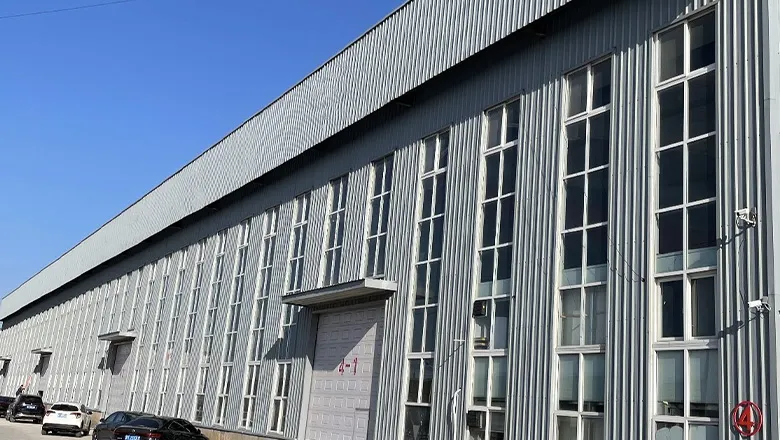loading...
- No. 9, Xingyuan South Street, Dongwaihuan Road, Zaoqiang County, Hengshui, Hebei, China
- admin@zjcomposites.com
- +86 15097380338
- Welcome to visit our website!
Durable Fiberglass Walkway Grating Solutions for Safe and Efficient Outdoor Paths
The Advantages of Fiberglass Walkway Grating
In modern construction and design, material selection plays a pivotal role in ensuring the longevity, safety, and overall functionality of structures. Among the myriad of materials available, fiberglass walkway grating has emerged as a leading alternative to traditional materials like wood and metal. Not only does it offer structural integrity, but it also provides a range of additional benefits that make it an exceptional choice for various applications.
What is Fiberglass Walkway Grating?
Fiberglass grating is a composite material made from a combination of glass fibers and resin, resulting in a strong and lightweight structure. It is designed as a series of interlocking panels that can cover areas ranging from industrial settings to commercial and residential environments. The inherent properties of fiberglass, coupled with its manufacturing process, result in a versatile product that can withstand extreme conditions.
Durability and Resistance
One of the most significant advantages of fiberglass walkway grating is its exceptional durability. Unlike metal grating, fiberglass does not corrode, rust, or degrade when exposed to harsh chemicals, salts, or moisture. This resistance makes it ideal for environments such as chemical plants, wastewater treatment facilities, and coastal areas where exposure to corrosive elements is routine. The longevity of fiberglass grating means reduced maintenance costs and less frequent replacements over time.
Safety Features
Safety is paramount in any walkway design. Fiberglass grating offers excellent slip resistance due to its textured surface, making it ideal for wet or hazardous environments. Its lightweight nature also ensures easier installation, which can reduce potential workplace accidents during setup. Additionally, fiberglass is non-conductive, making it a safe option for electrical applications and areas where electrical hazards may be present.
Light Weight and Ease of Installation
fibreglass walkway grating

Fiberglass grating is significantly lighter than its metal counterparts, allowing for easier handling and installation. This characteristic not only reduces the labor costs associated with shipping and installation but also minimizes the need for heavy-duty support structures. The ease of installation can significantly shorten project timelines, enabling quicker transitions from planning to execution.
Aesthetics and Versatility
Available in various colors and finishes, fiberglass walkway grating can enhance the aesthetic appeal of any space. This versatility allows architects and designers to incorporate grating into their designs without compromising on visual quality. Whether used in a public space, industrial facility, or even in landscaping, fiberglass grating can be customized to meet specific aesthetic requirements while providing functional benefits.
Environmental Considerations
As the world increasingly focuses on sustainable building practices, fiberglass grating presents an environmentally friendly option. Many manufacturers emphasize the use of recycled materials in their production processes. Additionally, the durability and reduced maintenance needs of fiberglass grating contribute to a lower overall environmental impact throughout the product’s lifecycle. Choosing fiberglass over wood helps preserve forests and reduces the need for chemical treatments often used in wooden structures.
Cost-Effectiveness
Although the initial investment for fiberglass grating may be higher than traditional materials, the long-term savings are considerable. Its durability and low maintenance requirements result in lower costs over time. In sectors where safety and compliance with regulations are critical, the reliability of fiberglass grating can also reduce liability risks associated with accidents, further enhancing its cost-effectiveness.
Conclusion
In summary, fiberglass walkway grating stands out as a robust, versatile, and environmentally conscious choice for a wide range of applications. From its unmatched durability and safety features to its ease of installation and aesthetic flexibility, it offers numerous advantages over traditional materials. As industries continue to evolve and prioritize sustainable practices, fiberglass walkway grating is poised to play a vital role in modern construction and facility management. Embracing this innovative material can lead to safer, more efficient, and environmentally friendly building solutions in the years to come.
-
The Rise of FRP Profiles: Strong, Lightweight, and Built to LastNewsJul.14,2025
-
SMC Panel Tanks: A Modern Water Storage Solution for All EnvironmentsNewsJul.14,2025
-
GRP Grating: A Modern Solution for Safe and Durable Access SystemsNewsJul.14,2025
-
Galvanized Steel Water Tanks: Durable, Reliable, and Ready for UseNewsJul.14,2025
-
FRP Mini Mesh Grating: The Safer, Smarter Flooring SolutionNewsJul.14,2025
-
Exploring FRP Vessels: Durable Solutions for Modern Fluid HandlingNewsJul.14,2025
-
GRP Structures: The Future of Lightweight, High-Performance EngineeringNewsJun.20,2025
